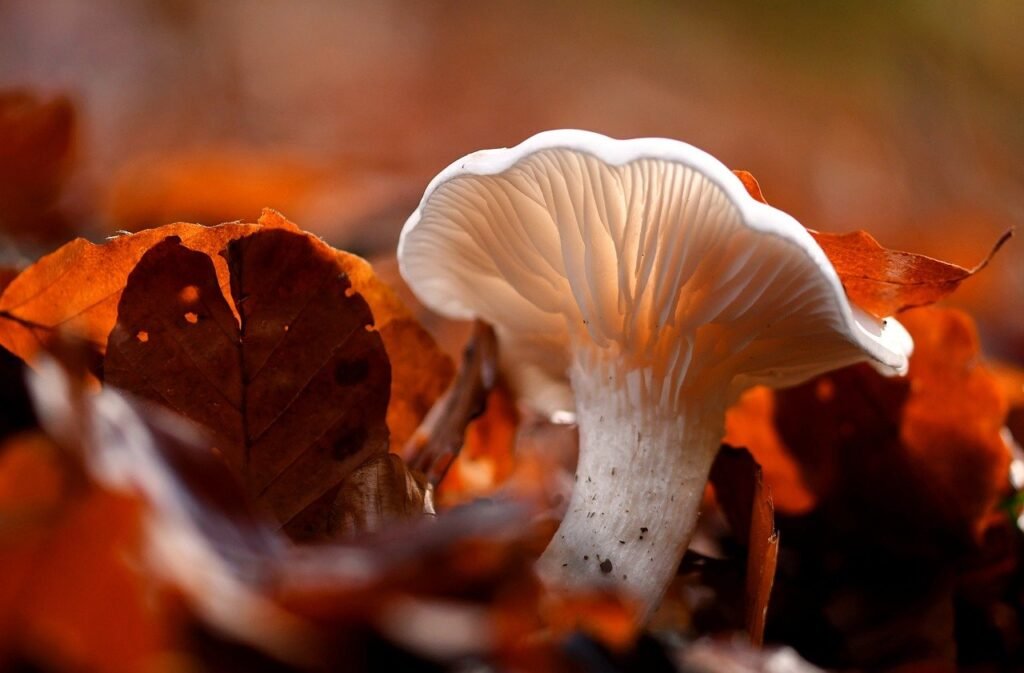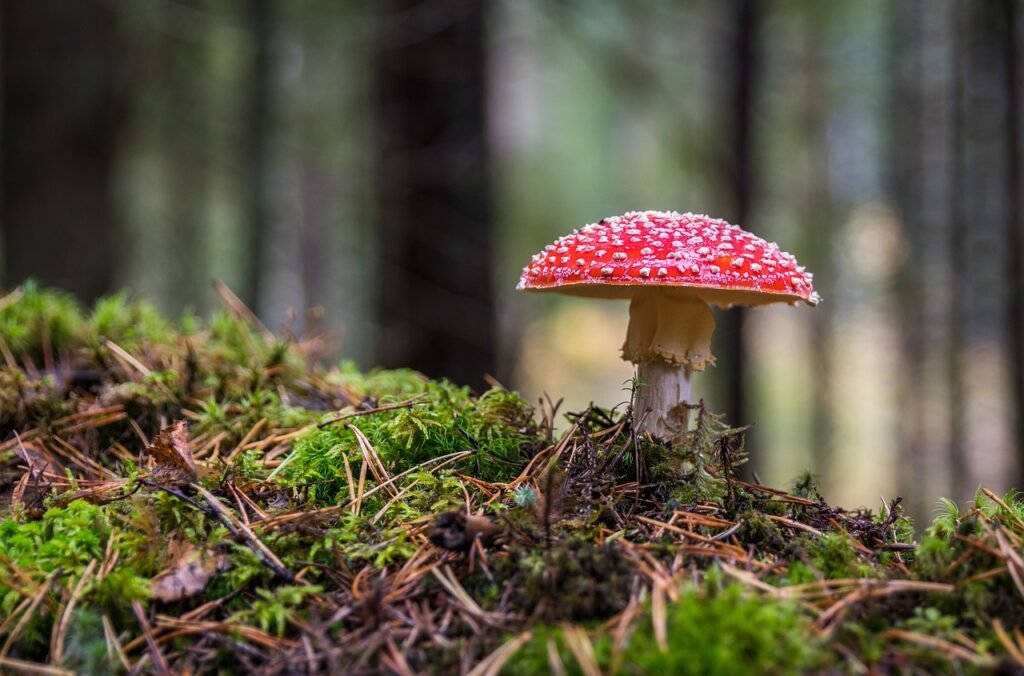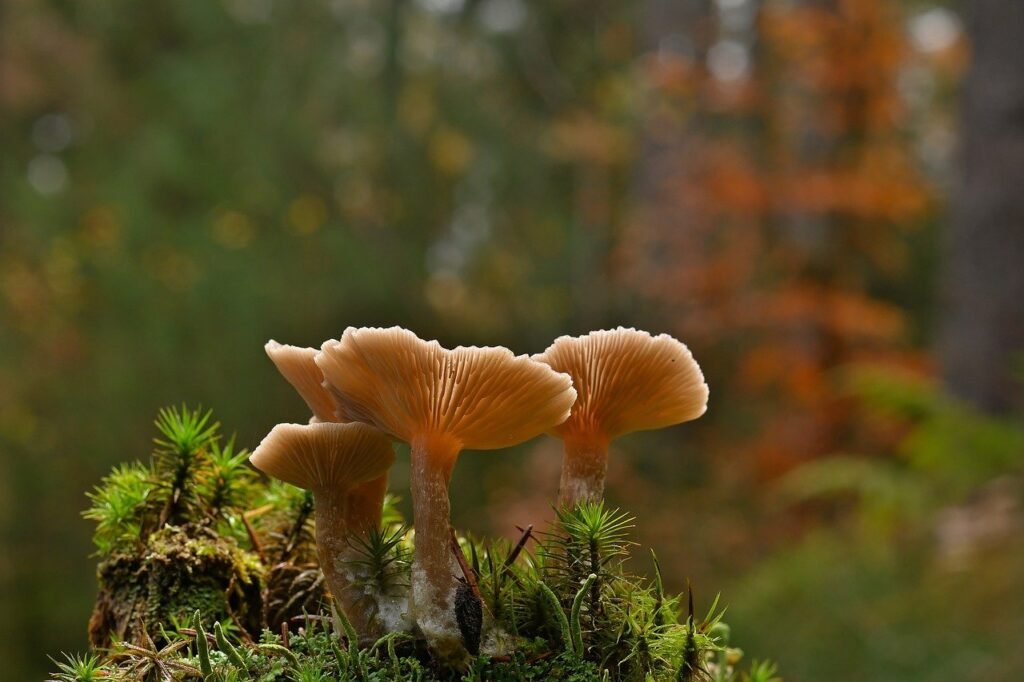Imagine stumbling upon a seemingly harmless mushroom during a leisurely stroll in the woods. Its elegant appearance might catch your eye, but little do you know, this innocent-looking fungus is actually a deadly predator lurking in disguise. Meet the Amanita phalloides, a species of mushroom responsible for the majority of mushroom-related poisonings worldwide. From its deceptive allure to its lethal consequences, delve into the sinister world of this poisonous mushroom.

Description of Amanita Phalloides
Physical Characteristics
Amanita phalloides, commonly known as the Death Cap mushroom, is a highly toxic fungus with distinct physical characteristics. The cap of the mushroom is usually light to dark green in color, but it can also appear yellowish or brown. It has a smooth and shiny surface, often adorned with white patches or scales. The cap, which can grow up to 4-8 cm in diameter, is initially convex but later flattens out with age. The stem, or stipe, is white and cylindrical, measuring approximately 6-15 cm in length. It is usually accompanied by a delicate white ring near its top. The gills beneath the cap, where spores are produced, are white and crowded together.
Where it is Found
Amanita phalloides is a widespread species found in various parts of the world. It thrives in temperate regions and is often associated with deciduous trees, particularly oak, chestnut, and beech trees. These mushrooms typically grow on the forest floor, appearing during the late summer and autumn months. However, they can also be found in urban areas, such as parks and gardens, where suitable host trees exist. It is important to exercise caution when foraging for mushrooms to avoid accidental ingestion of Amanita phalloides.
Toxicity and Symptoms of Amanita Phalloides
Deadly Toxin – Alpha-Amanitin
Amanita phalloides is one of the most toxic mushrooms known to man, primarily due to the presence of a deadly toxin called alpha-amanitin. This toxin disrupts the synthesis of RNA, a crucial process for protein production within cells. Even a small ingestion of this toxin can have severe consequences on the body’s organs, particularly the liver.
Symptoms of Poisoning
The initial symptoms of Amanita phalloides poisoning may take several hours to manifest, leading to a delayed recognition of the toxic exposure. Common symptoms include severe abdominal pain, diarrhea, and vomiting. As the toxin progresses throughout the body, individuals may experience dehydration, electrolyte imbalances, and potentially fatal complications. If left untreated, liver failure can occur, often leading to a poor prognosis and a high mortality rate.
Poisoning Incidents and Fatalities
Historical Cases
Throughout history, Amanita phalloides has been responsible for numerous poisoning incidents and fatalities. One particularly notable case occurred in the year 1815, when a group of French soldiers mistakenly consumed the Death Cap mushroom, thinking it was an edible species. This tragic event resulted in the deaths of multiple soldiers and served as a warning to the dangers of misidentifying mushrooms in the wild.
Global Distribution of Poisonings
Poisoning incidents related to Amanita phalloides have been reported across the globe, with varying degrees of incidence and severity. Regions such as Europe, North America, and parts of Asia have recorded numerous cases due to the prevalence of this toxic mushroom and its resemblance to edible varieties. The lack of awareness about mushroom identification, particularly among recreational foragers, contributes to the occurrence of poisonings worldwide.
Mechanism of Action and Organ Damage
Liver Damage
The toxins present in Amanita phalloides primarily target the liver, causing significant damage to this vital organ. Alpha-amanitin, in particular, disrupts the liver cells’ structure and function, leading to cell death and impairing the liver’s ability to detoxify the body. This damage can progress rapidly, often resulting in acute liver failure and necessitating urgent medical intervention.
Other Organs Affected
While the liver is the primary organ affected by Amanita phalloides poisoning, other organs can also be impacted. The gastrointestinal tract may suffer from inflammation, bleeding, and ulceration due to the mushroom’s toxic properties. Additionally, the kidneys and heart may experience dysfunction as a result of the systemic effects of the toxins.

Diagnosis and Treatment
Diagnosing Amanita Phalloides Poisoning
Diagnosing Amanita phalloides poisoning can be challenging, as symptoms may initially resemble common gastrointestinal ailments. However, healthcare professionals can identify potential cases by conducting a thorough medical history, particularly if there is a known exposure to mushrooms. Blood tests, imaging studies, and urine analysis may also be utilized to assess liver function and rule out other potential causes of symptoms.
Treatment Options
Immediate and appropriate medical treatment is essential when dealing with Amanita phalloides poisoning. The primary objective is to eliminate the toxic mushroom remnants from the body and prevent further absorption of toxins. This is often achieved through the administration of activated charcoal or induced vomiting. Supportive care, including intravenous fluids and electrolyte replacement, is crucial to maintaining the stability of vital functions. In severe cases, liver transplantations may be necessary to ensure the survival of the patient.
Prevention and Safety Measures
Avoiding Accidental Consumption
Preventing accidental consumption of Amanita phalloides starts with proper education and awareness. It is crucial to never consume wild mushrooms without expert guidance and proper identification. Foraging for mushrooms should only be undertaken by those with extensive knowledge and experience in mushroom identification. Additionally, caution should be exercised when purchasing mushrooms from markets or dealers, as misrepresentation of species can occur.
Identification and Awareness
Increasing awareness about the physical characteristics and toxic abilities of Amanita phalloides is key to preventing mushroom poisoning. Educational programs, community workshops, and online resources can provide valuable information on safe mushroom identification. Highlighting the importance of cautious behavior when encountering unfamiliar fungi can help ensure the well-being of individuals and reduce the risk of mushroom poisoning.

Edible Mushrooms and Lookalikes
Safe Consumption of Mushrooms
While Amanita phalloides poses a significant threat, it is important to note that numerous edible mushrooms exist. Cultivating an understanding of safe mushroom species can lead to the enjoyment of delicious and nutritious dishes. Consuming mushrooms from reputable sources, such as markets or certified suppliers, is recommended to guarantee their safety.
Common Lookalike Species
One of the key challenges in mushroom foraging is distinguishing toxic species from lookalikes. Amanita phalloides, for example, bears resemblance to several edible mushrooms, making misidentifications possible. Close attention should be paid to physical characteristics, such as the shape, coloration, and presence of key distinguishing marks or structures. When uncertain, it is best to err on the side of caution and avoid consuming any wild mushrooms without expert confirmation.
Research and Advances
Antidotes and Experimental Treatments
Researchers and medical professionals are continually striving to develop effective antidotes and treatments for Amanita phalloides poisoning. Experimental therapies, such as the use of silibinin, have shown promise in mitigating the toxic effects of alpha-amanitin on the liver. Ongoing studies are focused on identifying alternative treatment options and improving patient outcomes.
Genetic Studies
Advances in genetic studies have enabled scientists to better understand the genetic makeup of Amanita phalloides and its toxins. This knowledge can contribute to the development of targeted interventions and improved methods for identifying potential toxic mushrooms in the environment. Genetic research is a promising area that may offer significant advancements in the prevention and treatment of Amanita phalloides poisoning.

Cultural Significance
Mythology and Folklore
Amanita phalloides has been intertwined with mythology and folklore throughout history. In some cultures, it has been associated with mystical powers and was believed to be a sacred mushroom. However, due to its toxicity, this mushroom is often depicted as dangerous or deadly in folklore cautionary tales.
Artistic Representations
The striking appearance of Amanita phalloides has captivated artists and inspired various artistic representations. From paintings to literature, this toxic mushroom has found its way into the creative realm, serving as a subject of intrigue and symbolism. However, these artistic expressions should not overshadow the critical importance of understanding its inherent dangers.
Conclusion
Increasing Awareness and Education
The deadly nature of Amanita phalloides necessitates increased awareness and education surrounding mushroom safety. Understanding the physical characteristics, toxicities, and potential lookalikes of this dangerous fungus is crucial in preventing accidental ingestion and poisoning. Education initiatives within communities, schools, and healthcare settings can help disseminate important information and promote responsible mushroom foraging practices.
Importance of Mushroom Safety
While mushrooms offer a diverse array of flavors and textures, it is essential to prioritize safety when consuming or handling them. Proper identification and vigilant caution are paramount to avoid the severe consequences of mushroom poisoning. By cultivating a deeper understanding of mushroom safety, individuals can enjoy the culinary pleasures mushrooms offer while ensuring their well-being.

